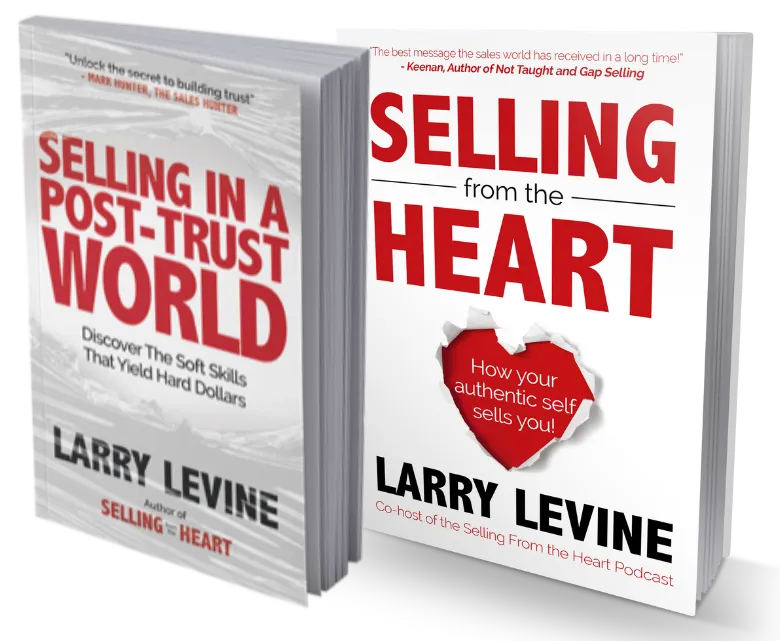FREE RESOURCES
More Trust,
More Sales!







The Trust Formula
Our training centers on building trust with prospects and clients.


The Foundation of a Coaching Culture: Integrity and Transparency
In today’s fast-paced business world, leaders who prioritize integrity and transparency lay the groundwork for a thriving coaching culture. When employees trust leadership, they are more open to feedback, willing to learn, and motivated to grow. But how can leaders cultivate integrity and transparency in their coaching approach?
Why Integrity and Transparency Matter
Damon Lembi, CEO of Learn It, emphasized on the Culture From the Heart podcast the importance of transparency in leadership: “I think you need to lead with integrity. I think you need to be transparent and I think you need to do your best to set a clear vision and help your team and your people get there.”
When leaders demonstrate honesty and authenticity, they build credibility and foster an environment where employees feel valued and heard. According to a 2022 Gallup report, organizations with high levels of trust experience 74% less stress, 106% more energy at work, and 50% higher productivity among employees.
How to Lead with Integrity and Transparency
Model the Behavior You Expect
Leaders set the tone for workplace culture. If transparency and integrity are values you expect from employees, ensure they see it reflected in your own actions. A study by the Harvard Business Review found that employees who perceive their leaders as highly ethical are 6.5 times more likely to trust them.
Communicate Openly
Even When It’s Difficult as Lembi pointed out, avoiding difficult conversations can lead to a toxic culture: “If you don’t address and have these hard conversations, a couple of things are going to happen. Your culture is going to erode, and quite frankly, you might end up with a very toxic environment.” Leaders should create spaces for open dialogue, providing clear and constructive feedback to help employees grow.
Set a Clear Vision and Align Coaching with It
Transparency is not just about sharing information—it’s about aligning the team around a common purpose. Employees perform best when they understand how their work contributes to the organization’s mission. According to McKinsey, employees who feel a strong sense of purpose at work are 4.7 times more engaged than those who don’t.
Encourage Feedback from Employees
A true coaching culture is a two-way street. Encouraging employees to share their thoughts—without fear of retaliation—strengthens transparency and trust. A survey by Great Place to Work found that companies with a strong feedback culture have 14% higher employee engagement rates.
Practice What You Preach
Employees quickly recognize when leaders don’t follow their own advice. Damon Lembi highlighted the importance of continuous self-improvement: “Even as a CEO of a company, you must practice—even some of these difficult conversations. You have to wake up all the time with a practice mindset.” When leaders embrace learning and improvement, they inspire their teams to do the same.
Final Thoughts
Building a coaching culture starts with leadership that is rooted in integrity and transparency. When employees trust their leaders, they feel safe to engage in meaningful coaching conversations, take risks, and strive for personal and professional growth. By setting a strong example, fostering open communication, and aligning coaching with a shared vision, organizations can create an environment where employees thrive and business success follows.
This is the first article in our Creating a Coaching Culture series. Stay tuned for the next installment: Embedding Coaching into Daily Leadership Practices.

Get The Book That Started a Movement in the Insurance Industry
When Selling From the Heart released in 2018 it struck a chord in the insurance profession.
Executives, sales leaders, and sales professionals across multiple industries recognized that the biggest obstacle to growth was the ability to build and sustain trust. Larry Levine's book is a cry for authenticity. Buyers can smell insincerity. In the book, Larry shares his practical framework to bring authenticity and substance to prospects and customers.

"This book isn't one of those fluffy sales books that you read and have no way to act on. Selling from the Heart captures what it truly means to be successful in sales. It's not about the commission check, but rather helping people achieve their goals whatever they may be. I don't normally read for enjoyment, but I could not put this book down."
Lee Salz
Author, Sell Different



